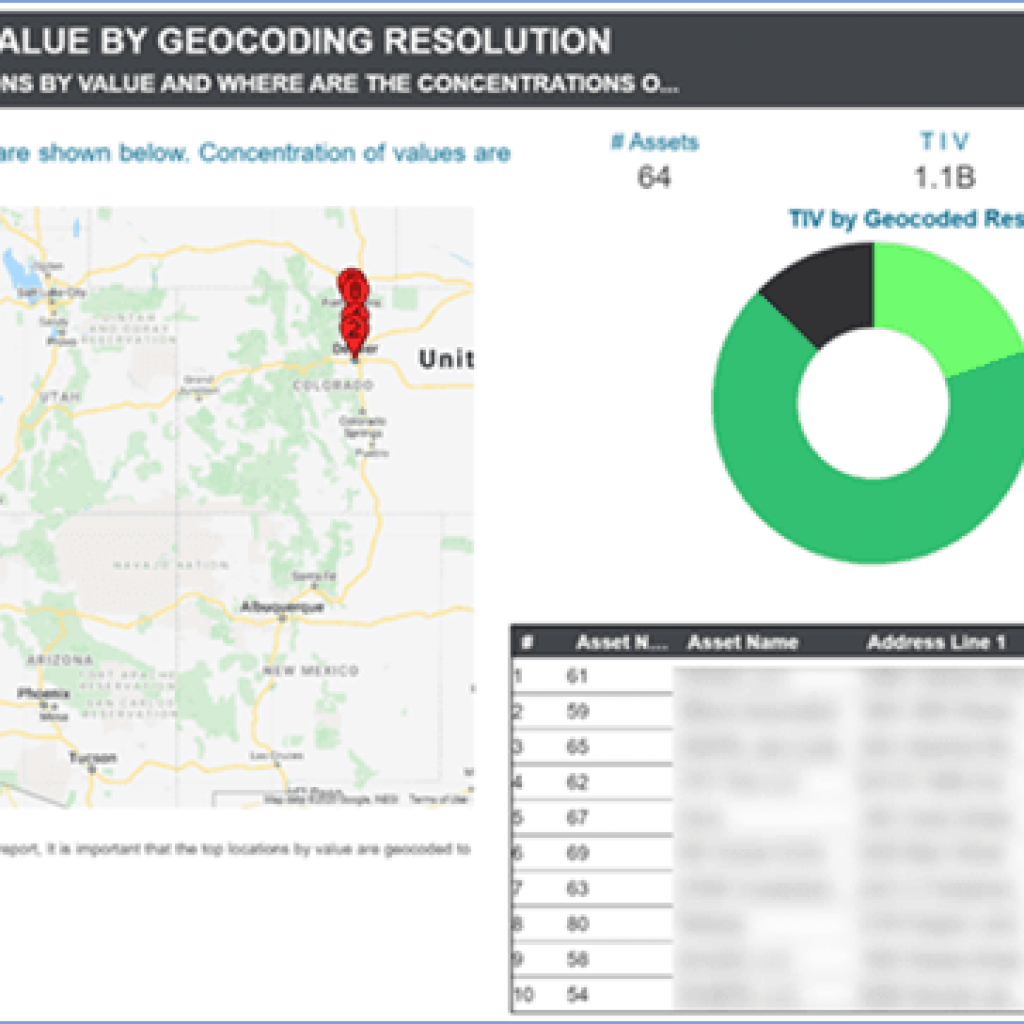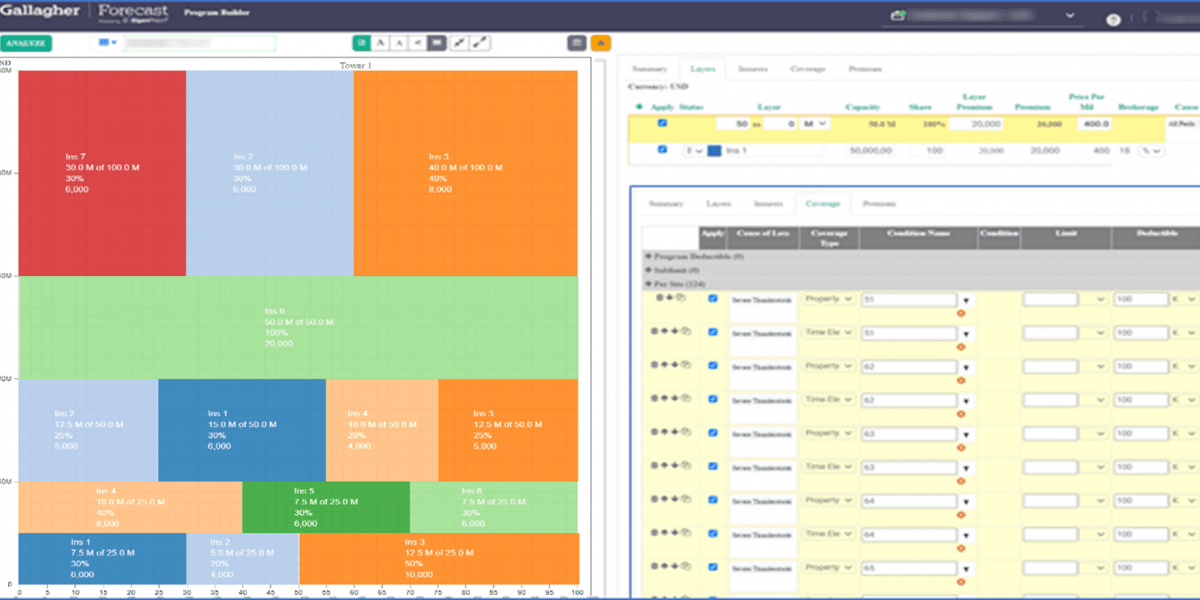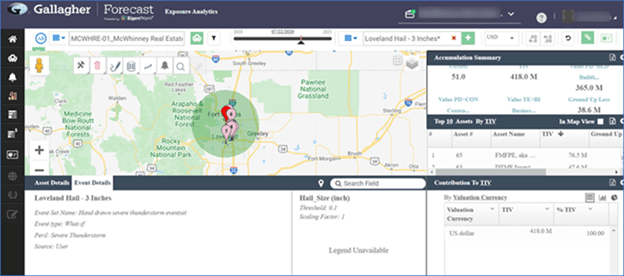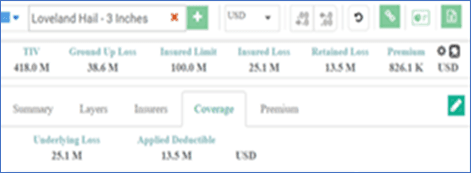Stress Testing Your Insurance Program in a Hard Property Insurance Market
Colorado is known for being one of the fastest-growing states in the U.S. Outdoor recreation and bustling urban settings are just a couple of the reasons that make the state a desirable place to live and work.
As such, real estate developments are booming. Insurance carriers, however, are well aware of the risks of insuring these properties around Colorado, and one of those risks is hail storms. In fact, Colorado claimed a top spot for hail damage in the U.S.
Challenge: Understanding Deductibles in a Hard Property Insurance Market
One real estate investment company that creates sustainable communities and state-of-the art commercial properties in Colorado was susceptible to these Colorado hail storms and tornadoes.
The company’s property insurance program was up for renewal in a hardening insurance market. That meant coverage restrictions for convective storm exposures. As a result, insurance underwriters responded by proposing a change from a standard dollar deductible to a percent deductible across their entire portfolio.
This real estate investment company turned to its broker, Gallagher, to better understand the financial implications of this change.
Solution: Building a Better Insurance Program
Gallagher is a U.S.-based global brokerage and risk management firm. To manage global catastrophe risk, Gallagher leverages EigenRisk’s SaaS platform (EigenPrism) in its risk assessment tool for natural catastrophes, Gallagher Forecast.
Gallagher Forecast is the latest addition to Gallagher’s premier data and analytics platform, Gallagher Drive. When used as part of CORE360™, Gallagher’s comprehensive approach to evaluating client’s risk management programs, Gallagher Drive creates meaningful insights to help clients make more informed risk management decisions, find efficient use of capital and identify the top markets with the best solutions for their risks.
To help their real estate investment company client to better understand how the proposed deductible structure would impact them, Gallagher utilized Gallagher Forecast.
The Three-Step Process
Gallagher followed a three-step process to assess the risk and potential financial impact:
Step 1: The first step was to check the accuracy of the data that the insurer would be working with. The client’s property statement of values were loaded into the system and Gallagher quickly found data inaccuracies, such as the incorrect geocoding.

Prior to Gallagher Forecast, pinpointing these inaccuracies was difficult if not impossible. When bad data is unknowingly fed into the insurer’s loss models, it results in inaccurate outcomes for the insured. With Gallagher Forecast powered by EigenPrism, Gallagher was able to correct the data quickly, so Gallagher and their client had a more accurate picture of true risk.
Step 2: The client’s current program structure was loaded into Gallagher Forecast, and Gallagher quickly accessed the “program builder” technology within the platform. This technology allows brokers to create a digital insurance program in minutes, including layers and shares, insurance carriers, premiums, and complex coverage terms and conditions.

Step 3: With the current policy coverages loaded into the platform, Gallagher ran two sets of deterministic models for tornado and hail.
To understand the potential financial loss from a tornado, the broker used “ROVER,” a feature within the platform that systematically searches a rich database of historical events to identify within seconds the “worst case” scenario.

Given the localized nature of hail, the broker used the client’s specific hail losses from carrier loss runs as a benchmark.
They then used this benchmark data to create their own what-if catastrophic event models to stress test different loss scenarios and financial outcomes based on hail diameters ranging from 1 inch to 3 inches.

Using the platform’s Exposure Analytics module, Gallagher simulated what-if scenario models by creating footprints recreating hail and tornado events over a geographic area.
Instantly, Gallagher knew the expected financial impact of 11 different scenarios to this client-specific footprint. The output included data on impacted assets, values at risk, estimated damage and the estimated ground-up loss.

The Result: Precise Insights, Right-Sized Coverage
They say a picture is worth 1,000 words and using the automated report generation feature in Gallagher Forecast, powered by our technology, Gallagher generated reports for each type of catastrophic peril for all the client’s properties. This included 11 different financial outcome scenarios with easy-to-understand visuals to provide quantifiable information.
These analyses showed that the proposed deductible structure from a dollar amount to a percent would result in a potential 67% increase in retained loss (aka the client’s deductible) –a financial burden that the client’s capital structure could not absorb.
Armed with this intelligence and in an effort to transfer some or all of this risk, Gallagher was able to advise their client to explore purchasing a deductible buy-down policy.
In summary, the EigenPrism technology enables Gallagher to:
- Seamlessly audit the integrity of the source data resulting in more accurate risk assessments
- Further increase productivity while gaining additional insights into a client’s true risk exposure
- Enhance their risk advising services, allowing the client to explore and evaluate additional cost-efficient risk transfer alternatives.
Together, EigenRisk and Gallagher create more opportunity for brokers and their clients to better understand their risk. This means brokers are more prepared to secure better outcomes, including insurance that is right sized for their clients’ individual situations.





